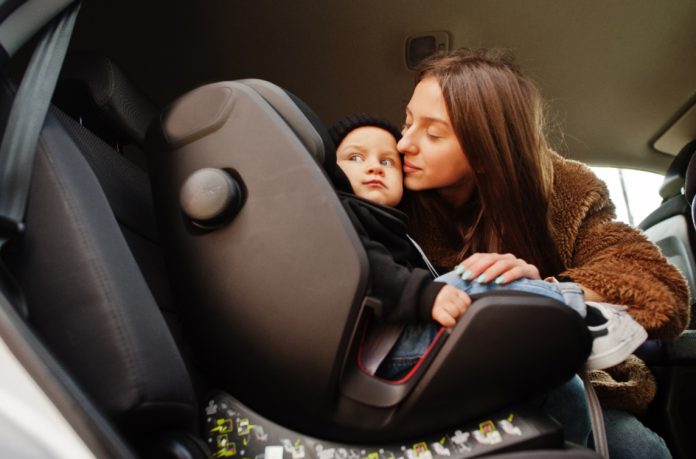Seat belt syndrome happens when a seat belt puts too much pressure on a child’s abdomen and spine during a crash. Kids are especially at risk because their bodies are still growing, and their bones aren’t as strong as an adult’s.
Many parents unknowingly move their children out of booster seats too soon. Studies show that a significant number of children between ages 5 and 9 are restrained using adult seat belts rather than booster seats, increasing their risk of seat belt bruises from car accidents.
The Children’s National Medical Centre found that over 70% of children with seat belt syndrome were between the ages of 5 and 9.
How Seat Belt Syndrome Happens
When a crash occurs, the force needed to restrain an occupant is calculated by multiplying the person’s weight by the vehicle’s speed at impact. For example, a 40-pound child in a car moving at 30 miles per hour experiences a restraining force of approximately 1,200 pounds.
If the seat belt is not positioned correctly, this force is transferred directly to the abdomen instead of the stronger pelvic bones, increasing the risk of severe injury.
Many children slouch in their seats to make their legs more comfortable, causing the lap belt to shift from their hips to their abdomen. If the shoulder belt is behind their back or under their arm, their upper body remains unrestrained, leading to a jackknifing effect in a crash.
This can cause severe spinal injuries, internal bleeding, and even a ruptured liver or spleen.
Signs and Symptoms of Seatbelt Syndrome
Parents should watch for signs such as:
● Stomach pain or tenderness
● Bruising across the belly
● Difficulty walking or standing
● Weakness or numbness in their legs
Properly Restraining Your Kids in the Car
According to the National Safety Council, the proper use of car seats can reduce injury risk by up to 71% for young passengers.
As children grow, parents should transition them to booster seats before allowing them to use an adult seat belt. However, even in a booster seat, improper belt positioning can lead to seat belt syndrome.
Here are a few points every parent should keep in mind to ensure their child’s safety:
● Children should use a booster seat until they reach at least 4’9” tall, which typically happens between ages 10 and 12.
● A child must pass the 5-step seat belt fit test, which ensures the belt fits correctly across the chest and lap.
● The lap belt should sit snugly across the upper thighs, not the abdomen.
● The shoulder belt should rest across the chest and collarbone, never behind the back or under the arm.
● Children should remain in the back seat until at least age 13, as the back seat is the safest place in the car.
Seat belts save lives, but they have to be used the right way. Taking a few extra seconds to make sure your child is properly buckled in can prevent serious injuries.
If you ever have doubts about whether your child’s seat belt fits correctly, check the guidelines for their age and weight or visit a car seat safety check in your area.







